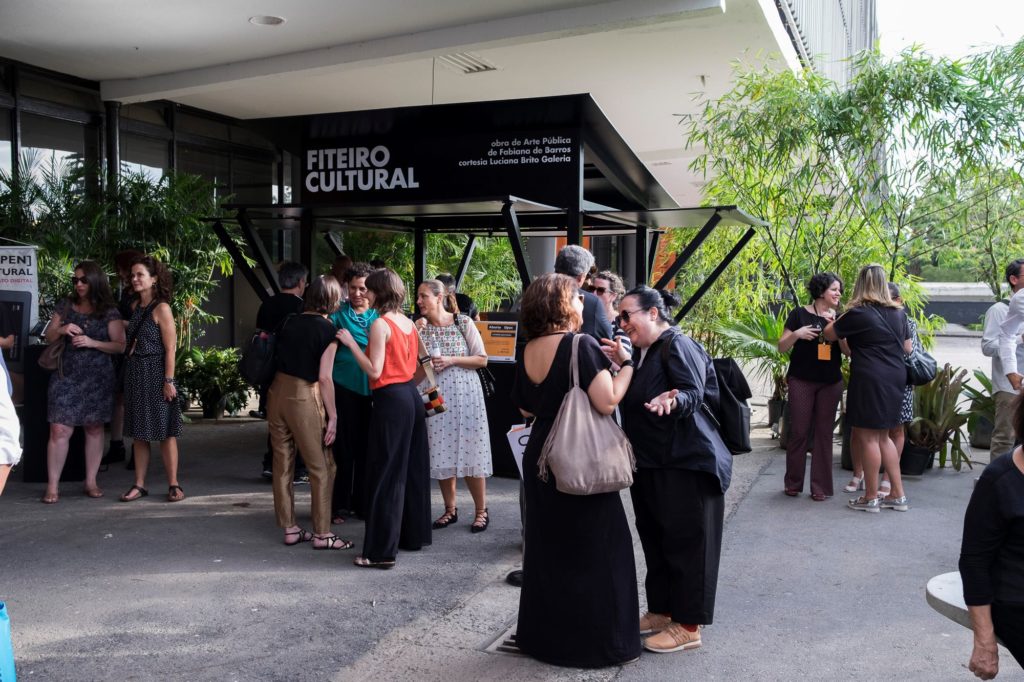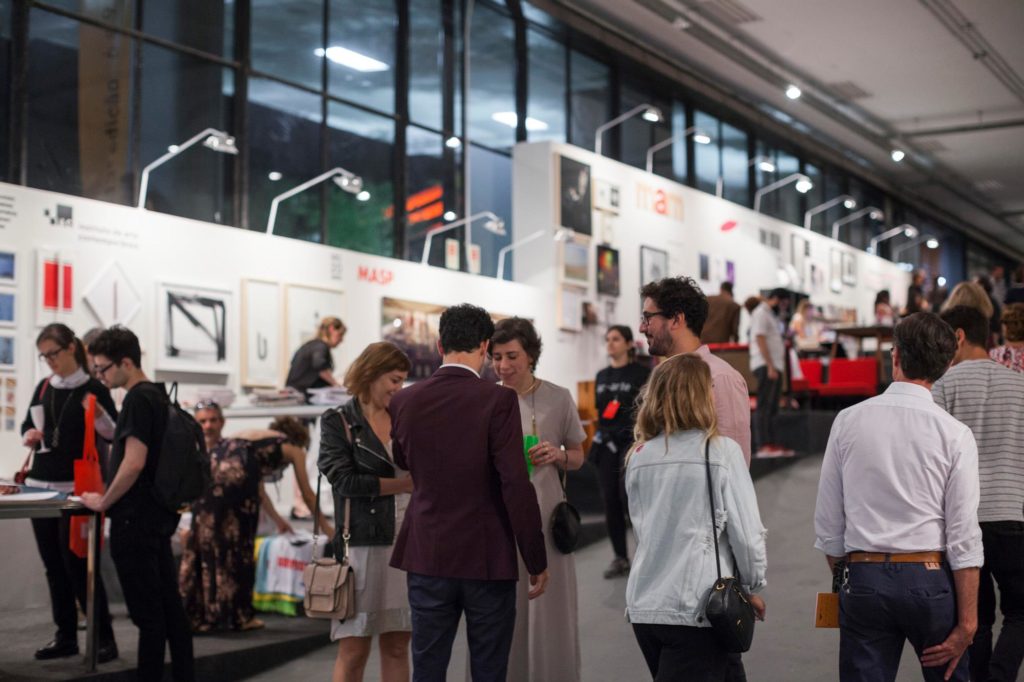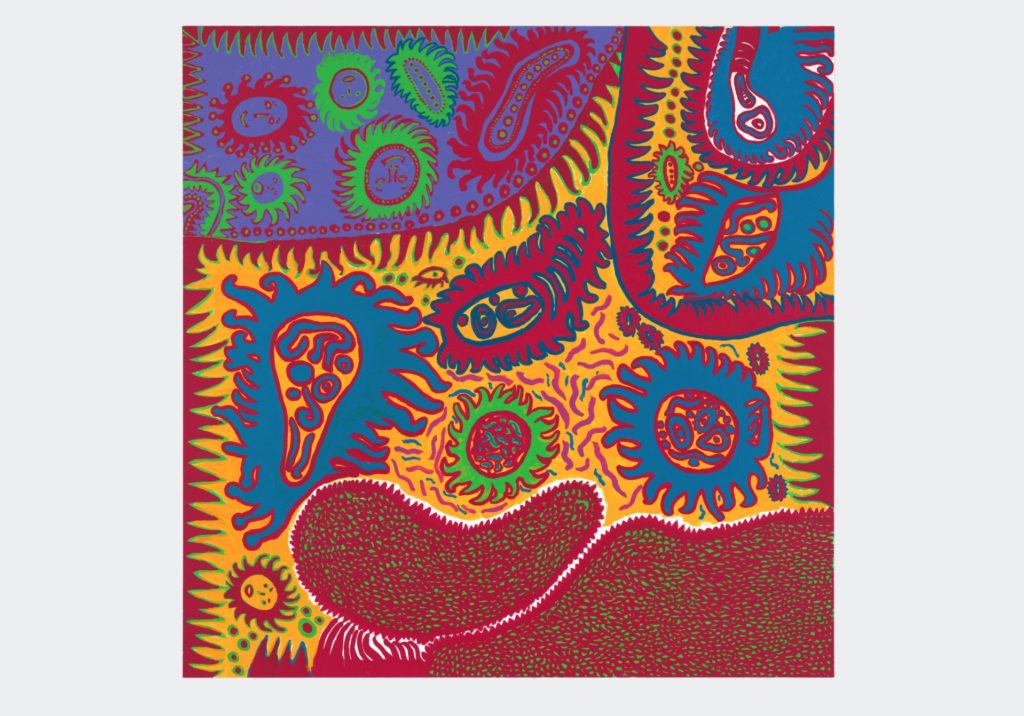Art Fairs
Here’s What Sold at SP Arte 2017, the Heart of the Much-Watched Brazilian Art Market
Is Brazil's art market beginning to recover?

Is Brazil's art market beginning to recover?

Henri Neuendorf

Brazil’s art market seems to have mastered the recent economic crisis and political instability, with dealers expressing optimism at the 13th edition of SP Arte in São Paulo.
Taking place at the city’s biennial pavilion, this year’s fair was split into three broad categories, with solo presentations on the ground floor, the main galleries sector on the second floor, and, for the first time, a dedicated design section on the third floor.
The fair is an important event in the domestic calendar, and not just in São Paulo, which serves as the nation’s primary arts hub. Organizers managed to lobby government to lower the state sales tax for participants for the five-day duration of the event (plus two extra days to close deals), to bring the exorbitant 50 to 60 percent sales tax down to a more manageable rate of between 15 to 16 percent. To attract international galleries, concessions on import duties have also been made during the run of the fair.

Guests mingling at SP Arte, 2017. Photo: Ênio Cesar e Jéssica Mangaba, courtesy of SP Arte.
All in all, SP Arte is a local affair. Founder and director Fernanda Feitosa estimates that 95 percent of visitors are Brazilian—and this, according to dealer Daniel Roesler of São Paulo and New York-based Nara Roesler, is what sets the fair apart. “The uniqueness is the Brazilian-ness,” he explained. “You don’t see a range of Brazilian artists like this anywhere in the world. On top of that, the international participants create a rich dialogue. At a time when fairs are becoming more international, the local flavor is important.”

A visitor at SP Arte, 2017. Photo: Ênio Cesar e Jéssica Mangaba, courtesy of SP Arte.
The gallery reported some good early sales. The São Paulo museum Pinacoteca do Estado acquired a recent painting by Bruno Dunley and a sculpture by Artur Lescher. Meanwhile, private collectors from Brazil and abroad bought works by Dunley, Rodolpho Parigi, Abraham Palatnik, Sergio Sister, Carlito Carvalhosa and Tomie Ohtake, and works from Vik Muniz’s “Handmade” series, among others.
Nearby, fellow São Paulo and New York-based outfit Mendes Wood DM also reported a solid start, including a 14-piece set by Paulo Montero, which went to a Brazilian institution. The gallery also placed a painting by Lucas Arruda, two paintings by Solange Pessoa, a wall piece by Paloma Bosque, and several photographs by Paulo Nazareth.

Jac Leirner Closed Eyes (2017). Photo: Eduardo Ortega, courtesy of Fortes D’Aloia & Gabriel.
Another local gallery that did very well was Fortes D’Aloia & Gabriel, which nearly sold out its entire booth by the end of the second day. This included placements of works by Nuno Ramos, Jac Leirner, Lucia Laguna, Agnieszka Kurant, Efraim Almeida, Iran Ispírito Santo, and Luiz Zerbini. Gallery representative Marie Ana Pimenta told artnet News that most sold to Brazilian collectors, and were priced between $14,000 to $120,000. “Everyone is positive,” she said. “It was a good day for most galleries.”
Elsewhere, a São Paulo mainstay, the dealer Luisa Strina, sold works by Lygia Pape, Fernanda Gomes, Renata Lucas, and Cildo Meireles.
In contrast to the locals, overseas dealers reported slightly slower sales. As Fortes D’Aloia & Gabriel’s Pimenta noted, the Brazilians had a distinct advantage. “It’s our home fair,” she explained.
It was noticeable that the foreign participants brought works that they thought would appeal to a Latin American collector base, rather than offering the styles that have proven hot in the northern markets. There was lots of geometric abstraction and ephemeral pieces, in other words. “We certainly try to find a point of reference for the local audience when we do international fairs,” Heinrich Hohenlohe of Berlin’s Neugerriemschneider conceded, and others seemed to have followed the same path. But did the strategy pay off?

Yayoi Kusama’s My Visionary Live (2013). Photo: David Zwirner.
One of the most prominent international exhibitors, mega-gallery David Zwirner, reported the sale of canvasses by Yayoi Kusama and Oscar Murillo, a small piece by Francis Alÿs, and works by Lisa Yuskavage and Wolfgang Tillmans.
Thaddaeus Ropac brought a large sculpture and several works on paper by Georg Baselitz. The gallery’s head of operations, Markus Kormann, said the sculpture sold to a Brazilian collector, and that two drawings had been bought too.

Thaddaeus Ropac, Salzburg, Paris, London. Photo: courtesy of Thaddaeus Ropac.
A few booths over, London’s White Cube brought works by Gabriel Orozco, Virginia Overton, Damian Ortega, Damien Hirst, and Antony Gormley. “We have placed a series of important works by a variety of artists in the region,” director Peter Bentley-Brandt said in an email.
Although the gallery declined to divulge details, fellow Brit dealer Stephen Friedman said, “We did well,” while Mexico City’s Kurimanzutto allowed that they were “pleased” with sales.
Based on the market snapshot of SP Arte, it seems that confidence in the Brazilian sector is slowly returning, although the trend at the fair points towards slightly greater interest in works by local artists rather than foreign imports—which may be the result of the Brazilian government’s protectionist import policy. Regardless, it seems the recovery of Brazil’s art market is off to a promising start.